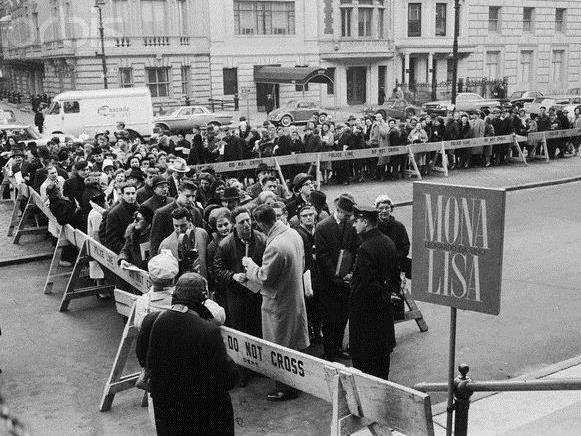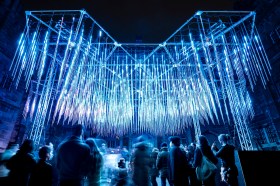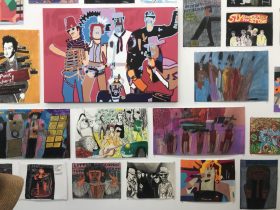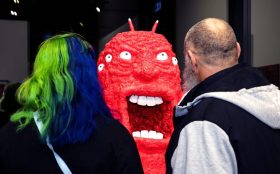Mona mania: New Yorkers line up outside the Met for the hottest ticket in town in 1963
It is said that visitors spend on average of about 15 seconds viewing the Mona Lisa. It is hardly the 15 minutes of fame that Andy Warhol is credited as saying, or the 50 minutes plus that you might wait in line to get your snap of the famous dame of the canvas.
Is this viewing art, bucket list tourism or the cult of the object? Human beings are programmed to like looking at faces; a survival instinct for babies. But is it love of the portrait that drives Mona Lisa crowds or, for that matter, Australia’s own portrait phenomenon, the Archibald Prize, announced today?
Last year the Archibald exhibition drew 135,887 at the Art Gallery of New South Wales alone, with crowds snaking their way through the gallery, most heading straight to the winner to cast their opinion before taking the rest of the exhibition in. The Doug Moran National Portrait Prize, with double the prize money and presented at Juniper Hall in Paddington – just a short distance from the AGNSW – does not have the same popular appeal.
In Victoria scoring the Archibald touring exhibition is a coup for a regional gallery, with thousands travelling an hour or two from Melbourne to visit the Mornington Peninsula Regional Gallery (2013 and 2014) or Tarrawarra (2011 and 2012). For many it is the first time they have visited these galleries, or even been aware of their existence.
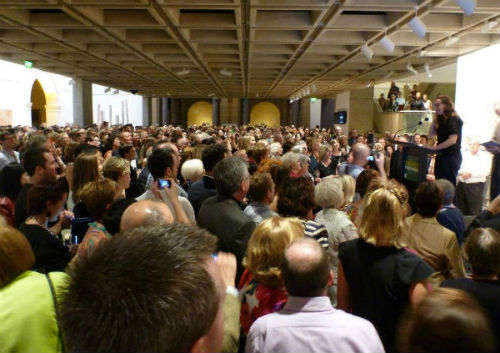
Opening 2013 Archibald, Wynne and Sulman Prizes
The Sydney art world bargains for a ticket to the opening night of the Archie, although not perhaps with the cultural bargaining skills that enabled Jackie Kennedy to charm France’s then Minister of Culture of the day, André Malraux, into lending the Mona Lisa to America. The first stop was the National Gallery in Washington DC, where over a half million people spent hours in line to gaze upon the famed beauty, while on 7 February 1963, she made her debut to the public at the Metropolitan Museum of Art, New York City.
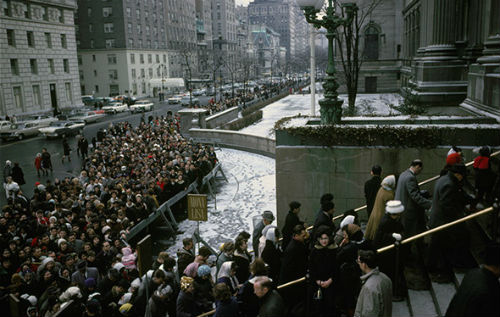
Crowds flock to the Met in 1963 for the single-loan exhibit of Mona.
It was reported on the event: ‘On that first day, thousands lined up outside in the freezing cold to catch a glimpse of the iconic painting; the first in line, a taxi driver named Joseph Lasky, got there at 4:30 in the morning. By week’s end, already a quarter of a million people had visited the museum to see the Italian masterpiece.’
Clearly, the pairing of the cult of Jackie Kennedy and the Mona Lisa went down well in America, even as Presidents John F. Kennedy and Charles de Gaulle tussled over nuclear policy and the Cuban missile crisis erupted.
While this year’s Archibald is hardly brokering international politics, it does broker territory in democratising the art museum here in Australia, and with ever-present funding cuts and a need for accountability, there is indeed a role and an important place for the Archibald Prize exhibition.
It seems that the role these exhibitions play in nurturing a next generation of cultural awareness has also been there from the start. Children were part of the publicity campaign of Jackie’s, almost immediately following John F. Kennedy’s inauguration she announced her plans to make the White House a “showcase for great American art and artists”, to the AGNSW introducing Young Archie last year – the entrance of which doubled this year.
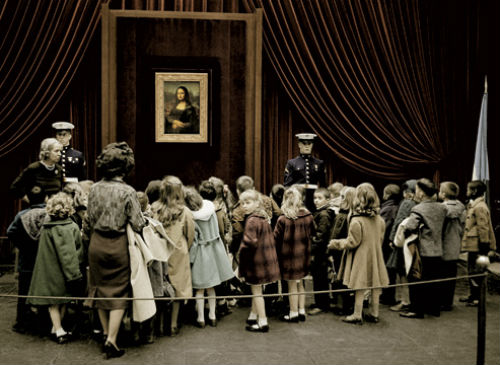
But the cult of the portrait started well before this US tour of the Mona Lisa.
In December 1913, the Mona Lisa was placed in Room 28 of the Uffizi on a pedestal draped with the red cloth. The New York Times reported: ‘So great are the crowds striving to obtain a view of the ‘Mona Lisa’ that the authorities have been obliged to remove many of the busts and statues from the Uffizi Gallery to prevent them from being overturned and broken in the struggles to get near the picture.’
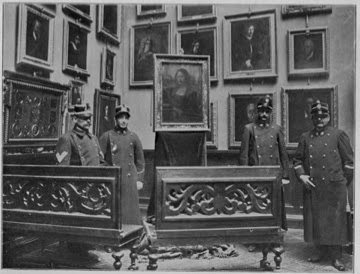
The painting was kept behind a balustrade guarded by four carabinieri. Visitors were allowed to enter in parties of 100 at a time.
It was a strategy used again for the 1962–3 American tour; the insurance costs to exorbitant on the painting – assessed at the time to be valued at $US100 million – more money was spent on security instead.

In 1974, the Mona Lisa was exhibited in Moscow and at the Tokyo National Museum, where it sprayed with red paint in a protest to the museum’s policy for disabled people. The use of bulletproof glass shielded the Mona Lisa from this, and several attacks over time.
So while you are waiting in line for your chance to view this year’s Archibald exhibition – and vote in the popular People’s Choice – you might consider what attracts you to the exhibition.
